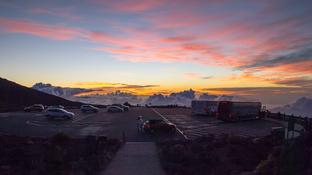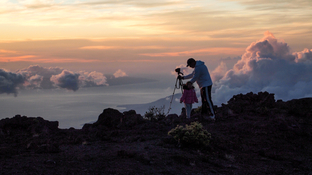Alan - If too much area is made accessible to the general public and all the amenities it expects, you essential destroy it. That's why the second great wave of conservation occurred, the Wilderness Act movement. But many places are de facto protected by the sheer ruggedness of the terrain. People who needed to get in have done it for thousands of years. Yosemite Valley is somewhat different because it's only one of the only two deep glacial valleys in the Sierra Nevada realistically accessible by road or prior wagon path. My babysitter as an infant, who was 95 at the time, was allegedly the first white woman (actually, little girl) to ever enter Yosemite Valley. But not long thereafter it was a mauled mess with a big hotel, lumber mill (where John Muir once worked, cattle herds in the meadows to feed all the tourists, etc). Today it's basically a city of 30,000 on many summer days. Even in my youth we called it "Curry National Park" due to all the commercialism from the Curry Company. That's been dialed back somewhat, thank goodness.
But deeper back in there are areas you can walk for a week with high odds of not seeing anyone else. I've done it. And to say it's all been photographed - utter hogwash. I've accidentally stumbled onto the exact spots in both Yos backcountry as Sequoia NP as certain famous AA images, yet aimed my camera at something entirely different that I found much more compellling to my own manner of looking at things. And even in Yos Valley itself, where I rarely take pictures, every single one of them I've printed doesn't duplicate anyone else's pictures, no matter how many millions of times some kind of camera has been aimed at the same nominal feature. If fact, I've even got shots right from the road higher up of splendid rock formations and actual peaks that I've never seen another rendition of, unless for sake of a climbing diagram with dotted lines all over it.
Then you get down into King Canyon NP, which AA was quite involved with getting set aside, and you've got major areas not only roadless, but trail-less. Some really rugged country, which I've personally spent far more time in than in Yosemite NP. And despite having taken literally hundreds of backpacking trips in the Sierra, I'd probably need another 8 lifetimes to see a token amount of all of it.
People need the ability to actually discover things for themselves. But 99 % percent of them just want to check off their list of postcard "must see" stereotypes. Just a few weeks ago, in fact, briefly passing through Yos Valley during perhaps its last of the classic snowstorm of the season, and with especially abundant waterfalls, I saw people going to the Bridalveil Falls viewpoint turnout, taking Selfies of themselves in front of the sign, and not even bothering to look at the Fall itself ! - that's their perfect right, but leaves me scratching my head why even bothering taking the trip.
Otherwise, like I already tried to explain, much of that country remains defacto wilderness by its very nature. At my former property, before I retired, I could simply cross the road and start walking, and enter a hundred square miles so rugged that the only people who have ever been deep within it, besides myself, were three of my early climbing companions and one ancient Indian. But that doesn't necessarily protect it. Another damn dam was proposed which would have ruined most of it, and actually have diminished overall water supply and hydro power. But the sheer insane cost of another mega-project like that is what really stopped the idea. And now, finally, a third category of protection is entering the equation, with the Nature Conservancy involved in the protection of rare or special biota ecosystems in the area; and in some cases (not all) with a provision for limited supervised public access. But one still has to be in serious shape.
And back to Yosemite Valley - it was already made famous by great photographers well before Ansel Adams, especially Carleton Watkins, Edward Muybridge, and Fiske. But an Army Corps had to be brought in to protect the high meadow from sheep overgrazing. Sometimes sheepherders got to such remote places, by such difficult routes, that nobody today even thinks about trying it themselves with all their modern mountain gear.


 He helped popularize them. The parks have become too successful. Parking is a problem. In Zion, they have shuttle buses running into the main valley area. Pretty convenient. You have to park south of the valley in the town of Springdale to catch the shuttle although other areas of Zion are open to public traffic.
He helped popularize them. The parks have become too successful. Parking is a problem. In Zion, they have shuttle buses running into the main valley area. Pretty convenient. You have to park south of the valley in the town of Springdale to catch the shuttle although other areas of Zion are open to public traffic. 

